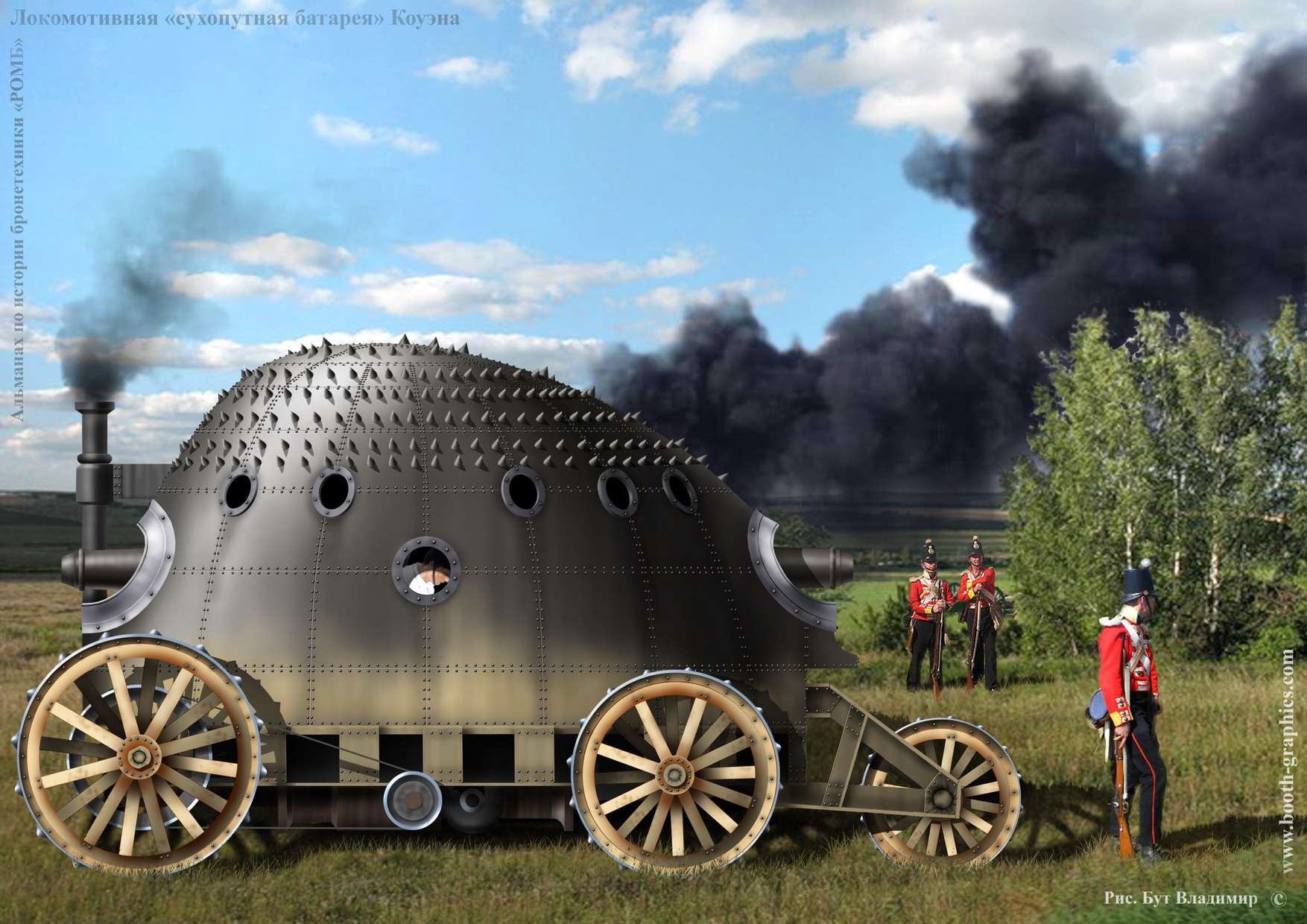
Boydell’s steam tractor, with its ‘footed’ wheel, was a practical
attempt to enable vehicles to cross soft, uneven ground and the inferior roads
of the 19th century.
Steam traction engines were also used to tow guns on other
occasions during the second half of the 19th century. In the meantime, prompted
probably by the Crimean War, J. Cowan proposed another use of steam traction
for military purposes in 1855 in Britain by taking out patent No. 747 for a
`Locomotive Battery for Field of Battle with a Steam Engine’ – a wheeled
vehicle with a turtle-like iron carapace out of which protruded several guns
and at the side of which were scythes for mowing down any troops that might
attack it.
All he proposed was the adaptation of the existing steam
tractor of James Boydell (first patented in 1846) to mount cannon behind a
dome-like, iron outer casing and travel where other types of wheeled vehicles
could not move. The Boydell tractor was a practical example, used in the
Crimea, of a portable railway – in this case a vehicle which did not sink into
the ground because its wheels were fitted with detached pivoted rails, or feet.
These were laid down and then picked up as the wheel turned, to spread the
vehicle’s load. Had it been built, the Cowen’s crews would almost have baked
alive behind their armour, yet they might have survived against the enemy in
this genuine proposal for a practical, self-propelled vehicle uniquely
incorporating mobility, firepower and protection. Certainly the Boydell footed
wheel triggered many inventors to begin experiments with `continuous tracks’.
Cowan’s vehicle was never built, but during the South
African War of 1899-1902 the British Army used about 50 traction engines for
towing supply trucks and guns. In 1900 two of the engines built for use in
South Africa by John Fowler and Co. of Leeds were armoured, as were the trucks
they towed, to protect them against Boer attacks when they were used for
carrying supplies. Eventually the number of the armoured Fowler engines sent to
South Africa rose to four. The armour of the Fowler engines and of the trucks
was provided with loopholes through which rifles could be fired, and a field
gun could be hauled onto a truck instead of being towed. In principle, there
was only a small step from this to a steam-powered, gun-armed armoured fighting
vehicle. Such a vehicle had in fact already been envisaged by Cowan and was
depicted in 1883 by A. Robida in a French journal La Caricature.
The ideas of Robida, like those of Cowan, were never
implemented, but 20 years later steam-powered armoured vehicles were the
subject of a story by H. G. Wells, the science fiction writer, which was
published in the Strand Magazine in December 1903 under the title `The Land
Ironclads’. This story is often presented as a prophetic vision of future
armoured vehicles and as having influenced, albeit indirectly, the development
of the first British tanks several years later. In fact, Wells’ `ironclads’ did
not represent an advance on Fowler’s armoured steam engines built three years
earlier so far as their means of propulsion were concerned, and this was
equally true of their armament, which still consisted of rifles. Nor did they
foreshadow future armoured fighting vehicles in other respects, except for
being envisaged to operate off the roads over broken ground. However, what was
to make this possible was not very practicable, as it was based on the use by
the `ironclads’ of Pedrails – another type of footed wheel devised around 1899
by B. J. Diplock. This wheel has been confused with the Pedrail track, which
was not brought out by Diplock until 1910, and has led to the erroneous belief
that Wells foresaw tracked armoured vehicles